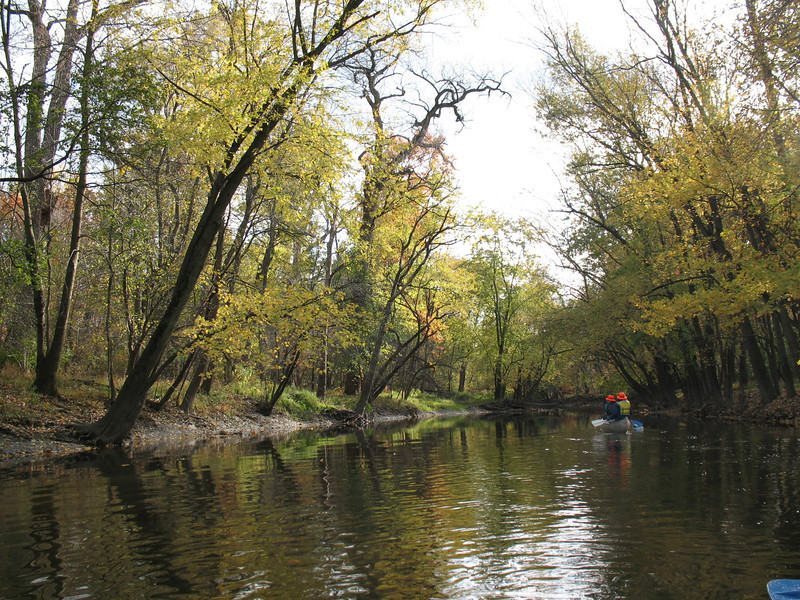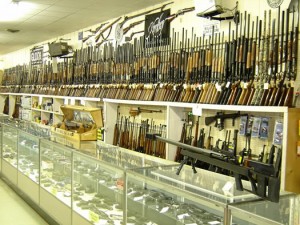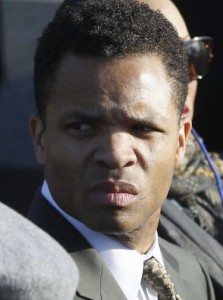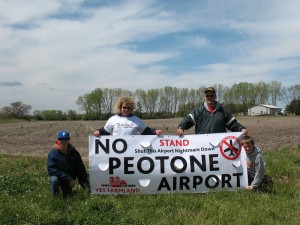A pretty good article here that I found on LinkedIn about finding a job after college. Solid advice in a still challenging job market.
Also check out the Green Jobs section of this website for reports, stats, and other resources.
A pretty good article here that I found on LinkedIn about finding a job after college. Solid advice in a still challenging job market.
Also check out the Green Jobs section of this website for reports, stats, and other resources.
Today I head west to the city of Rock Island, which hugs the Mississippi River in northwestern Illinois (right across the water from Davenport, Iowa). I’ve been invited to give a talk on urban sustainability issues in Chicago at Augustana College’s annual Winter Symposium, which this year is focused on sustainability and environmental issues. Since I can never resist a chance to talk about urban waterways, my talk is entitled “Paddling the Chicago River: A Good Way to Think about Science, Art, Ethics, and the Sustainability of Cities.”

The degraded yet undeniably charismatic Chicago River is a mighty fine place to contemplate the tangled relationships among water quality, land use, and sustainability within cities and suburbs. As a site for exploring urban nature, an object of analysis in the scientific assessment of water quality and urban ecology, and a case-study in landscape aesthetics, the Chicago river provides students and citizens myriad opportunities to develop a sense of place. More generally, experiencing urban rivers — and understanding their function within the complex watersheds of metropolitan regions — can foster not just ecological literacy about urban ecosystems but also ethical engagement with one’s community.
Here’s a pdf version of my presentation.
Hey, RU students! Want to improve your research skills in order to find great sources for your academic work, whether in print or online? If so, your timing’s perfect, since my colleague Katy Hite, instructional librarian at RU, is running some great student workshops next week. Here’s the skinny:
In addition to my academic writing as an RU professor of humanities a nd sustainability studies, I also regularly write blog essays, newspaper columns, and magazine articles for a general audience. This helps to keep me out of trouble (as deadlines always roll around more quickly than I expect) and inspires me to keep my eyes peeled for interesting tidbits as well as think about the issues of the day, such as they are.
nd sustainability studies, I also regularly write blog essays, newspaper columns, and magazine articles for a general audience. This helps to keep me out of trouble (as deadlines always roll around more quickly than I expect) and inspires me to keep my eyes peeled for interesting tidbits as well as think about the issues of the day, such as they are.
Here in my hometown of Joliet, Illinois, I’ve written a monthly column on environmental, political, and cultural topics for the Opinions page of the Joliet Herald-News, the local daily paper, since 2006. You can read my collected columns for 2010, 2011, and 2012 (as pdf documents) and check out the Joliet section of this blog for expanded versions of these columns since February 2011. For blog essays on a variety of other topics, see the Categories index at right.
After a week of deafening silence following the Newtown massacre, the National Rocket-launcher Association at last rolled out its new school safety strategy: placing an armed security guard in every American school. This is supposedly because “the only thing that can stop a bad guy with a gun is a good guy with a gun,” as noted by NRA vice president Wayne LaPierre.
In other words — surprise! — we need more guns.

The trouble is, this Wild West-inspired idea isn’t very creative or original. And it’s bound to be expensive, what with paying for the security guards’ salaries, insurance, training, equipment, medical treatment (after in-school gun battles gone awry), and the occasional funeral.
Alternatively, we might consider other slaughter-reduction strategies that don’t involve turning our schools into quasi-military installations. Something like this one, which I just thought up. I call it A Kindergartner in Every Gun Shop.

My plan’s a little different from the NRA’s approach in that its ultimate goal is fewer guns in circulation rather than more. Better yet, as a voluntary community service program staffed by five- and six-year-olds, it’s free.
Here’s how it would work. Every kindergarten class in America would be assigned to a gun shop, ammo dealer, firing range, or firearms expo somewhere in the community. Parents and teachers would develop a schedule for the students to monitor each gun-related location — with one kid at a time working a morning, afternoon, or evening shift — during business hours. Yes, each child would miss a little school every month, but the public-service experience would be mighty educational.
Customers would be required to do a fifteen-minute “kindergartner check” before buying guns or ammunition. This would involve looking into the eyes of the child, who then asks the adult a series of standard questions, such as “Do you know how many people in Illinois die each year from gun violence?” and “Do you really need yet another assault rifle for your collection?”
Assuming the customer still desired to make a purchase, the kindergartner would then run though some basic guidelines on gun safety, including “Don’t bring your gun to school and shoot at teachers”; “Never let your surly teenage son mess with your semi-automatic rifle after playing excessively violent video games“; and “Don’t point your pistol at your face to demonstrate the safety mechanism, because it might fail and you’ll blow your head off.”
Skeptics might quibble that elementary schoolchildren aren’t truly qualified to lecture adults on gun ownership and safety, since most of them are still learning their letters and numbers. (The kids, I mean.)

True, but kindergartners are really good at talking, not to mention the educational technique of “show and tell.” Some of them, particularly in crime-plagued cities like Chicago and Joliet, could offer real-life lessons in how their older relatives died in gun battles, or shot themselves accidentally, or got thrown in jail from blasting someone else. Such anecdotes can really liven up an otherwise dry lecture on firearm safety.
I see one drawback to my plan, though. Assume that the many thousands of gun dealers in our country are each open for 50-60 hours per week. Even with little Sally and Bobby pulling double shifts at their local bazooka retailer, those are a lot of business hours to cover.
I’m a little worried that at the rate that children are getting mowed down these days in our schools, we won’t have enough kindergartners to go around.
A version of this essay (“Put a Kindergartner in Every Gun Shop“) appeared as my monthly op-ed column in the Joliet Herald-News on 4 January 2012.
Last Friday marked the graduation of several Sustainability Studies majors at Roosevelt: Alexandra Bishay, Jessie Crow Mermel, Kenton Franklin, Keith Nawls, Jeff Wasil, and Joe Zambuto. These former undergraduates walked across the famed Auditorium Theater stage in downtown Chicago to join the growing list of alumni from Roosevelt’s SUST program, which was founded in 2010 and offers classes in downtown Chicago, suburban Schaumburg, and online.

Each of these students pursued interesting and varied experiences during their time at RU, both within and outside of the university. Alex Bishay, Keith Nawls, and Joe Zambuto were members of the first Service & Sustainability (SUST 350) course in the spring of 2012; that class took place at the Chicago Lights Urban Farm and involved multiple field trips to urban agriculture sites in Chicago and Milwaukee, and did weekly work at this Growing Power farm site in Chicago’s Cabrini-Green neighborhood.
Kenton Franklin worked as an environmental sustainability work-study student, then intern, at RU’s Schaumburg Campus, and has been an instrumental contributor to the sustainable campus redevelopment efforts focused on making the Schaumburg facility more sustainable in its landscaping, energy use, and recycling. He plans to study environmental economics in graduate school.
Jessie Crow Mermel, who worked as a part-time farm educator at Angelic Organics Farm in Caledonia, IL, while pursuing her studies at RU full-time, wrote a recent guest essay for the SUST @ RU blog, co-developed a media presentation (with current SUST major Mary Beth Radeck) on suburban sustainability issues for the 2011 Sustainability and Ethics Forum at the Chicago Botanic Garden, and intends to pursue graduate study in ecopsychology.
Jeff Wasil was already working in the environmental field when we transferred to Roosevelt in 2009, and then soon thereafter declared himself as one of the very first SUST majors at RU in the Fall of 2010. That semester he took SUST 220 Water, and managed to find time to fly to Lake Constance in Switzerland to give a talk at one of the most prestigious water conferences in Europe. Jeff later won acceptance to the University of IL at Chicago’s summer Sustainability Institute in 2011, where he worked on Chicago water conservation issues and planning with fellow undergraduate and graduate students from throughout the region. Jeff is employed as an Engineering Technical Expert in the Evinrude Corporation’s emissions testing, certification, and regulatory program, trying to lower the carbon emissions of boat engines as much as is technically feasible.
Congratulations to all our SUST grads this December, and best of luck to our continuing majors as they enjoy a well-earned rest and gear up for the Spring 2013 semester!
Here is an image posted by one of my students to the last discussion forum of this semester in my Sustainability Studies 220 Water course, along with her comment about it.
It can sometimes be challenging to wrap our minds around water scarcity on Earth when we so often picture it as a blue planet with immensely deep seas. Graphs certainly help to put the idea of water scarcity in perspective, but nothing has driven home this idea as much for me as this image from the USGS. The large blue bubble represents the volume of all the water (salt and fresh) on Earth (its diameter being 860 miles) in comparison to the volume of Earth. The small bubble represents the freshwater on Earth (including the water that is within trees, plants, you and I). And the teeny tiny blue dot by Georgia (look closely) represents all the freshwater that is accessible for our use. It looks smaller than the Great Lakes, but you must imagine it in three dimensions.
We live in a very visual culture. What water-related environmental images have you come across that have had a strong impact on you? What campaigns can you think of that have been successful in using images to impact change? How do you see art, photography, film, etc, having a role in expanding awareness on these critical issues we face? ~Jessie
One of the great things about the USGS page this comes from is that this arresting visual representation of the volume of Earth’s water (and fresh water, and available fresh water) compared to the total volume of Earth as a whole is then accompanied by statistical data and explanations that help us understand the physical story being told in that image. This in turn highlights, and then complicates, the often-evoked dichotomy of image (emotion) and text (reason) — the assumption in popular culture that pictures speak to our hearts and guts, while words appeal to our minds.
Of course, we know that dichotomy to be simplistic, if not simply false. Images such as this do more than pull at our heartstrings — consider the lonely and threatened polar bear here, or seals with fur matted with oil; they get us to think; they cause us to ask questions — in this case, about scale, about the relationship of water to the rest of the Earth’s mass, about the thinness and fragility of the biosphere (which is defined by water, without which there would be no “bio”).
Conversely, textual discourse — whether a poem or a scientific technical report — can stoke our emotions and even spur us to action, especially if we’re open to receiving its message and understand its internal logic. The impacts and effects of both text and image are wonderfully complex, and in the best cases work together more powerfully than they can separately. This example of Earth’s water is a fine case of that, writ large.
The work of science is phenomenally important to the advancement of sustainability in human communities — both in terms of economics and social equity — as well as to the conservation of natural ecosystems, basic resources (air, water, soil), and species. But science alone cannot change the policy that governs our human actions and regulates our excessive tendencies to waste, to think only of the short term, to ignore the unintended consequences of our technologies.
For those huge and ever-present challenges, we also need ideas — and those are debated and created in the creative fires of the arts and humanities in ways that cannot be replicated in scientific and political discourse. For sustainability to be a guiding force of human culture as well as a central feature of our governments (regardless of political persuasion), it needs art, music, literature, and other creative endeavors that define us as a species. And it needs people to connect such expressions to the worlds of science and policy as much as possible, as a means of building bridges and reshaping our views of the world — and our role in it.
This morning I put “The Dave Brubeck Quartet at Carnegie Hall” on my turntable. After a long and productive life in music, jazz pianist and composer Dave Brubeck passed away at age 92, as recounted here in the New York Times.

Take Five, Dave.
You’d think that Jessie Jackson Jr.’s stunning fall from political grace last week would have opponents of the Great Imaginary Airport in Peotone doing cartwheels of joy out in the cold autumnal winds of eastern Will County.

After all, the last significant public appearance by Jackson was way back on April 21st, when as a progressive-minded environmentalist he promoted Earth Day by sanctimoniously spading up soil in a Peotone-area cornfield while surrounded by media and bussed-in supporters from his 2nd Congressional District. His purported “people’s groundbreaking” was for what Jackson insisted on calling the Abraham Lincoln National Airport.
That grandiose name is telling, for it expresses Jr.’s once-vaulting political ambition even as it inappropriately cloaks a misguided boondoggle of an airport project in the image of one of America’s most revered presidents. It also signifies the longstanding logjam between Jackson’s Cook County-based Abraham Lincoln National Airport Commission (ALNAC) and the various governmental bodies of Will County, which understandably want to retain control over the airport’s construction and administration.
That’s why the folks of S.T.A.N.D. (Shut This Airport Nightmare Down) and other grassroots opponents of the Great Imaginary Airport should mourn rather than celebrate Jackson’s departure and ALNAC’s inevitable dissolution. Without the gridlock-producing squabbles over the airport’s construction funding, name, or design that Jackson’s commission helped create, airport proponents now have before them a slightly less congested path toward the project’s FAA approval — which hinges upon, among many other things, a unified governing authority for the airport.

Note that I said “slightly.” That’s because building a functional political alliance in Illinois these days is about as likely as finding a Republican candidate with a chance to win Jackson’s empty seat in the forthcoming special election his resignation necessitates. Consequently, the fate of the Great Imaginary Airport will continue to be determined by a long war of retrenchment among various factions, some high profile and others little known.
On one side are Governor Pat Quinn and his army of IDOT technocrats, who have spent $29.8 million of taxpayer money thus far buying up 2,317 acres of land in the as-yet-unapproved airport’s footprint, and are now expanding their holdings through eminent domain proceedings against unwilling sellers.
Aligned with Quinn are various Will County leaders eager for a big fat construction project to provide local jobs, no matter how temporary those might be or whether the long-term prospects of the airport are viable.
On the other side are Chicago mayor Rahm Emanuel, who strenuously opposes the project as antithetical to an expanded O’Hare; and United CEO Jeff Smisek, who is on record opposing a third airport for the Chicago region (a view shared by other major airline execs, as well).

Joining their ranks are the politically weak but morally righteous grassroots opponents in eastern Will County, who correctly view the airport as a naked land grab by the state; and a guy named Jim Bult, who in a supreme example of irony already owns and runs a small private airport within the footprint of the GIA (Bult Field) and who to my knowledge has no desire to shut down his operation or take his neighbors’ land.
Sure, we’ll miss you, Junior, and all the free theater you provided us over the years. But as for the Great Imaginary Airport controversy in Peotone, the war grinds on.
A version of this article was published as my monthly op-ed column in the 4 December 2012 edition of the Joliet Herald-News. For more information from IDOT’s perspective, consult the official South Suburban Airport website. For past news and critical analysis, see the commentary and news reports on this blog.
Advising and registration are now ongoing (since Nov 1st) for the spring semester at RU. If you’re one of my advisees, please check out the Advising Resources here on this blog (accessible from the top menu). Look over the spring schedule, check your remaining course requirements, and shoot me an email with your planned schedule and any questions you have about your upcoming classes.
Otherwise, be sure to contact your assigned advisor to talk with them about your course selections for spring (and summer, while you’re at it). November is the best time to get signed up!